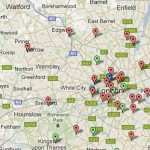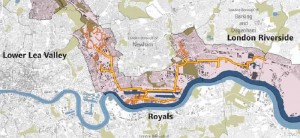Site search:
-
What’s new?
Energy for London Tags
Brent Buildings Camden Carbon Emissions CHP Cities Climate Adaptation Community Heating Community Initiatives Croydon Data DECC Decentralised Energy Distribution ECO Energy Costs Energy Efficiency Enfield FIT Fuel Poverty Funding Green Deal Hackney Haringey Housing Islington Lambeth Library Local Authorities Mayor Newham Ofgem Olympics Photovoltaics Planning RE:FIT RE:NEW Renewable Energy Retrofit Southwark Tower Hamlets Transport Waltham Forest Waste WestminsterEnergy Archives:
- February 2021 (1)
- January 2021 (15)
- December 2020 (15)
- November 2020 (9)
- October 2020 (3)
- August 2020 (5)
- July 2020 (3)
- June 2020 (4)
- April 2020 (10)
- March 2020 (5)
- February 2020 (2)
- January 2020 (3)
- October 2019 (1)
- September 2019 (4)
- August 2019 (2)
- July 2019 (1)
- August 2018 (1)
- November 2016 (8)
- October 2016 (8)
- September 2016 (2)
- August 2016 (8)
- July 2016 (14)
- April 2016 (12)
- March 2016 (16)
- February 2016 (8)
- January 2016 (4)
- December 2015 (1)
- November 2015 (1)
- October 2015 (16)
- September 2015 (3)
- June 2015 (1)
- May 2015 (1)
- April 2015 (1)
- March 2015 (1)
- February 2015 (1)
- January 2015 (1)
- December 2014 (18)
- November 2014 (4)
- August 2014 (8)
- July 2014 (7)
- June 2014 (25)
- May 2014 (8)
- April 2014 (4)
- March 2014 (12)
- February 2014 (7)
- January 2014 (13)
- December 2013 (11)
- November 2013 (15)
- October 2013 (15)
- September 2013 (18)
- August 2013 (5)
- July 2013 (20)
- June 2013 (33)
- May 2013 (8)
- April 2013 (16)
- March 2013 (25)
- February 2013 (14)
- January 2013 (20)
- December 2012 (23)
- November 2012 (23)
- October 2012 (25)
- September 2012 (14)
- July 2012 (12)
- June 2012 (43)
- May 2012 (20)
- April 2012 (8)
- March 2012 (40)
- February 2012 (39)
- January 2012 (40)
- December 2011 (22)
- November 2011 (40)
- October 2011 (33)
- September 2011 (48)
- August 2011 (40)
- July 2011 (58)
- June 2011 (41)
- May 2011 (80)
- April 2011 (38)
- March 2011 (33)
- February 2011 (25)
- January 2011 (24)
- December 2010 (3)
- November 2010 (7)
- October 2010 (6)
- September 2010 (7)
- August 2010 (1)
- July 2010 (2)
- June 2010 (4)
- May 2010 (1)
- March 2010 (3)
- February 2010 (3)
- December 2009 (5)
- November 2009 (2)
- October 2009 (3)
- July 2009 (3)
- June 2009 (1)
- April 2009 (1)
- March 2009 (1)
- February 2009 (1)
- January 2009 (1)
- December 2008 (2)
- October 2008 (1)
- September 2008 (1)
- July 2008 (1)
- March 2008 (2)
- January 2008 (2)
- October 2007 (1)
- September 2007 (3)
- July 2007 (1)
- March 2007 (1)
- February 2007 (3)
- November 2006 (3)
- August 2006 (1)
- February 2006 (1)
- May 2005 (1)
- February 2004 (1)
Tag Archives: Community Heating
Sutton Zero Carbon Resources
June 2012: The results of a project undertaken to help define a zero carbon retrofit strategy for buildings within the suburb of Hackbridge in the London Borough of Sutton has recently been published. The project was undertaken by BioRegional, with funding from the Sainsbury’s Family Charitable Trusts’ Climate Change Collaboration and the three key outputs – the authors say – have been “designed to be replicable in other areas.We hope that you will find them useful for your own projects.”
The area based strategy for zero carbon buildings report seeks to determine:
- How many and what type of buildings would need to be retrofitted.
- What different approaches could be taken to retrofitting, e.g. energy efficiency, building integrated renewable energy technologies or district heating.
- What would be the cost and delivery plan for the preferred approach, which may encompass a range of technologies.
- To develop an approach for formulating a zero carbon strategy for an area that other organisations, such as Local Authorities, Housing Associations and community groups could adopt.
The Retrofitting District Heating Systems study interestingly found that “district heating (using a variety of heat sources) achieved considerably more carbon emission savings than the full traditional retrofit option (whereby a building’s energy efficiency is improved by improving the building fabric and installing energy efficient or renewable sources of heat and electricity in the building itself) and at a lower cost.” A heat map for Hackbridge has also been produced.
And finally, an Energy retrofit tool for buildings spreadsheet tool which allows users to “input information about the domestic building stock in your area and the tool will then help decide on the best approach to retrofitting it using an area-wide approach.”
Posted in Library, News
Tagged Community Heating, Community Initiatives, Decentralised Energy, Heat Maps, Retrofit, Sutton
Leave a comment
Heat Maps produced for every London borough
June 2012: The London Heat Map project has now posted online heat map reports and datasets for every London borough. Information provided sets out that “The new heat maps are higher resolution with real heat consumption data for priority buildings such as hospitals, leisure centres and local authority buildings. As part of this work, each of the boroughs has developed implementation plans to help them take the decentralised energy opportunities identified to the next stages. The implementation plans include barriers and opportunities, actions to be taken by the council, key dates, personnel responsible.”
Posted in Data Store, News
Tagged CHP, Community Heating, Data, Heat Maps, London Heat Map
Leave a comment
Map of London District Heating Schemes
 June 2012: The London Heat Map captures a lot of the data related to Combined Heat and Power (CHP) and district heating schemes operating in the capital, but the CHPA have added a welcome web resource – a map of UK district heating schemes which includes a good number of London schemes. DECC also provides a list of CHP schemes operating in London – it’s not comprehensive however as operators are not required to have their details listed. Hence, only 32 schemes are listed on the DECC Public CHP database of the 188 schemes DECC state are operating in London in their latest regional CHP statistics.
June 2012: The London Heat Map captures a lot of the data related to Combined Heat and Power (CHP) and district heating schemes operating in the capital, but the CHPA have added a welcome web resource – a map of UK district heating schemes which includes a good number of London schemes. DECC also provides a list of CHP schemes operating in London – it’s not comprehensive however as operators are not required to have their details listed. Hence, only 32 schemes are listed on the DECC Public CHP database of the 188 schemes DECC state are operating in London in their latest regional CHP statistics.
Posted in Data Store, News
Tagged CHP, Community Heating, Data, Decentralised Energy
Leave a comment
KX CHP
May 2012: The first of three 2 MW Combined Heat and Power (CHP) engines for the 67 acre King’s Cross Central development has been installed at the on-site energy centre. In total the CHP capacity when finally installed will supply 100% of the development’s heat and offset almost 80% of its electrical power demand. The news release sets out that “Once commissioned, the CHP engine will not only generate electricity, which will be fed into the grid network, but will also provide heat for the development wide District Heating System (DHS). All of the 70 buildings at King’s Cross, from the University of Arts to the Camden Council building, BNP Paribas Real Estate’s new offices and the Great Northern Hotel, will be connected to the DHS When complete carbon emissions are expected to be a third less than ‘business as usual’ and up to 60% less than 2001 levels.”
Further information on the energy strategy for Kings Cross central here and main energy assessment (as set out for the planning application in 2005) can be downloaded here.
Posted in Decentralised Energy, News
Tagged Camden, CHP, Community Heating, Decentralised Energy, Universities
Leave a comment
Vauxhall Nine Elms Battersea Energy Strategy
 April 2012: A planning framework for the Vauxhall / Nine Elms / Battersea Opportunity Area has been finalised and is being adopted as Supplementary Planning Guidance to the London Plan. The OAPF has been produced by the GLA in collaboration with Lambeth and Wandsworth councils, as well as TfL and English Heritage and followed a public consultation process that took place in the winter of 2009/10.
April 2012: A planning framework for the Vauxhall / Nine Elms / Battersea Opportunity Area has been finalised and is being adopted as Supplementary Planning Guidance to the London Plan. The OAPF has been produced by the GLA in collaboration with Lambeth and Wandsworth councils, as well as TfL and English Heritage and followed a public consultation process that took place in the winter of 2009/10.
The framework sets out an ambition for around 16,000 new homes and a range of 20,000 – 25,0000 jobs and includes the creation of a Combined Cooling and Heat Power network. The technical appendices to the planning framework includes a Energy Strategy Masterplan (TA5) which states that “this report finds that the density and diversity of development in the Vauxhall Nine Elms Battersea (VNEB) Opportunity Area (OA) supports a strong case for the development of a low carbon district heating network (DHN). The scheme would supply low carbon heat to developments in the heart of Nine Elms, Battersea Power Station (BPS) and the New Covent Garden Market (NCGM) initially, with the potential to expand north into Albert Embankment and to the more industrial areas of the OA to the west in the future. It is estimated that such a scheme could save in the order of 18,000 tonnes CO2 per annum, with heat being derived from a combination of low/zero carbon sources,including combined heat and power (CHP) plant burning a blend of natural and renewable biogas and heat from a biomass hot water boiler.” Further detail and download energy appendix here.
Posted in Library, News
Tagged CHP, Community Heating, Decentralised Energy, Lambeth, Wandsworth
Leave a comment
Olympic Park – Cutting carbon
March 2012: A briefing event by the IET (Institution of Engineering & Technology) onthe ODA’s approach to “delivering this energy strategy for the Olympic Park, including energy efficient design, the combined cooling heat and power system and renewable energy” with a focus on the district heating network across the site. The event is to take place on 12 March 2012 at the IET London HQ at Savoy Place. Further details and link to book a place here.
Details of the Olympic Park Energy Centre here.
Posted in Events, News
Tagged CHP, Community Heating, Decentralised Energy, Olympics
Leave a comment
South Kilburn decentralised energy system
February 2012: Brent Council has recently issued a tender for a major new decentralised energy heat and power system in South Kilburn. The tender outlines that “It is envisaged that c. 2 000 new homes, a new school, a healthy living centre and new commercial units will be built in the area. This site will have a high proportion of new build, medium rise social housing blocks and as such is well suited to a heat network. London Borough of Brent is procuring the services of an energy service company to finance, design, build, manage and maintain a decentralised energy system which will provide heat with a combination of CHP and boilers to the new residential and non-residential units for a period of 40 years.”
The Council is looking to a company to install the necessary infrastructure including heat pipes to establish a linked network and to distribute the heat to each building via the network. The investment required to realise the scheme is estimated by the Council to be of the order of £67m.
Additional information on the project including a timeline for the approval for the contract are provided in the following Brent Council document.
Posted in Decentralised Energy, News, Uncategorized
Tagged Brent, Community Heating, Decentralised Energy
Leave a comment
Tottenham Biomass District Heating scheme
25 January 2012: An update has been provided on – as this news release says – is the UK’s first biomass district heating scheme. Hale Village in Tottenham, London, comprises 2220 homes, which will receive heat and hot water via a biomass boiler district heating network using wood pellets. Read more here.
Posted in Decentralised Energy, News
Tagged Biomass, Community Heating, Decentralised Energy, Enfield
Leave a comment
Southwark District Heating project moves forward
January 2012: LetsRecycle news reports on progress made by Southwark Council to develop new district heating infrastructure taking heat from Veolia’s energy from waste plant, SELCHP, to provide low carbon, affordable heat to 3,000 homes across seven estates in Southwark. Southwark will not be required to make any up-front financial contribution to the project but would instead sign a long-term contract to buy the heat at a guaranteed lower price than can be secured from the conventional energy market. Further details are provided in the following Southwark news release and some earlier posts provide some further background.
E.ON leads CHP drive in London
January 2012: E.ON provide an update on their plans to extend their Citigen district heating scheme, based in the City, which serves both private and City Corporation properties, the latter including the Guildhall, Smithfield Market, the Barbican Arts Centre and the Museum of London. Read the interview here: more on Citigen here and here.


